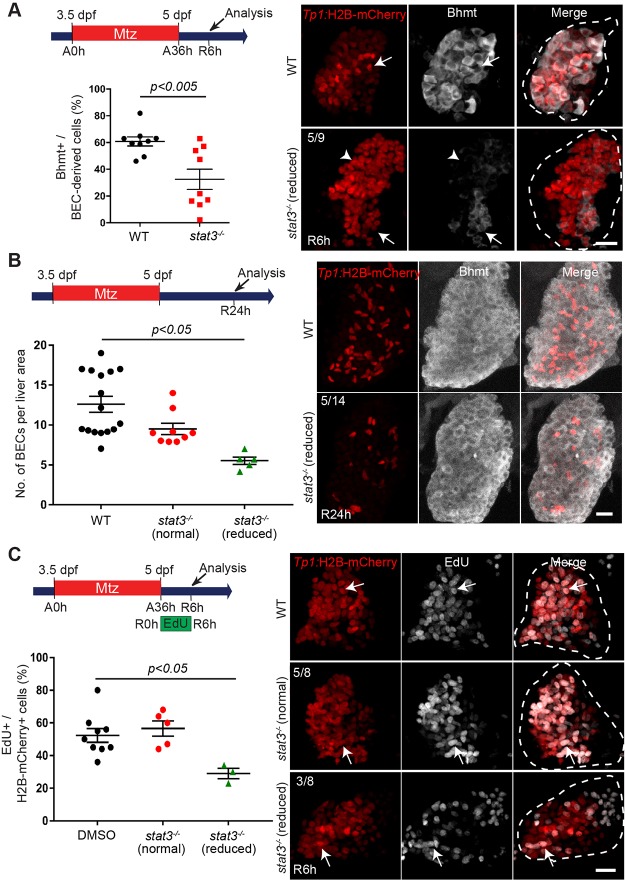Figure 6.
A subset of stat3 homozygous mutants exhibit reduced number of BECs and a delay in LPC-to-hepatocyte differentiation during LPC-driven liver regeneration. (A) Confocal projection images showing Tp1:H2B-mCherry (red) and Bhmt (gray) expression in regenerating livers of wild-type or stat3 homozygous mutants at R6h. Quantification of the percentage of Bhmt+ cells among H2B-mCherry+ cells is shown. The proportion of regenerating livers exhibiting the Bhmt phenotype in stat3 mutants is shown in the top left corner. Arrows point to Bhmt+ and H2B-mCherry+ cells. Arrowheads point to Bhmt- and H2B-mCherry+ cells. (B) Confocal projection images showing Tp1:H2B-mCherry (red) and Bhmt (gray) expression at R24h in wild-type and stat3 mutants. Quantification of the number of strong H2B-mCherry+ cells per liver area is shown. The proportion of stat3 −/− mutants exhibiting the reduced BEC number phenotype is shown in the upper left corner. (C) Confocal projection images showing Tp1:H2B-mCherry (red) expression and EdU (gray) staining in regenerating R6h livers of wild-type and stat3 −/− mutants. Numbers in the top left corner indicate the proportion of stat3 mutant livers exhibiting reduced proliferation (n = 3/8) versus nonaffected stat3 mutants (n = 5/8) compared to wild-type larvae. Quantification of the percentage of EdU+ cells among H2B-mCherry+ cells in the regenerating liver is shown. Arrows point to EdU/H2B-mCherry double-positive cells; dashed lines outline regenerating livers. Scale bars: 20 μm; error bars: ± SEM.

